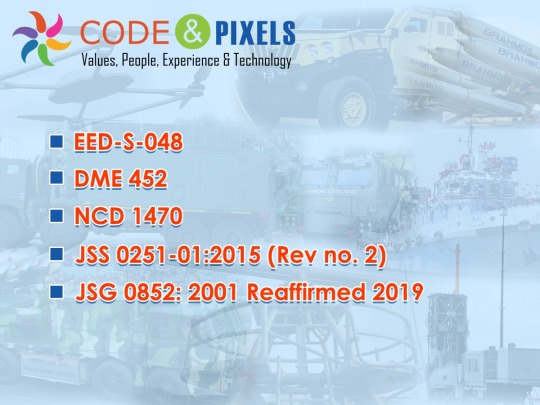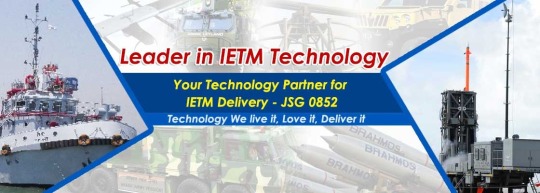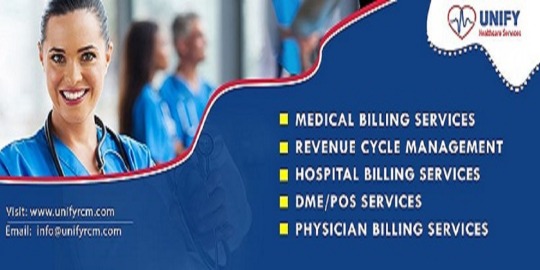#DME coding
Explore tagged Tumblr posts
Text
Optimizing Revenue Recognition in Durable Medical Equipment Billing
In the complex healthcare billing landscape, revenue recognition stands out as a critical aspect for durable medical equipment (DME) providers. Accurate and timely revenue recognition ensures financial stability and regulatory compliance. However, navigating the complexities of revenue recognition in DME billing can be challenging due to evolving regulations, payer complexities, and varying reimbursement methodologies. This article aims to explore strategies and best practices to optimize revenue recognition in DME billing.
Understanding Revenue Recognition in DME Billing
Revenue recognition in DME billing involves the process of recording and reporting revenue generated from the sale or rental of durable medical equipment. Unlike other industries, healthcare billing, including DME, is subject to strict regulatory requirements, such as those outlined by the Centers for Medicare and Medicaid Services (CMS) and private payers.

Key Considerations in Revenue Recognition for DME Billing Include:
Documentation Requirements: Proper documentation of medical necessity, prescription orders, and supporting clinical notes is crucial for revenue recognition. Incomplete or inaccurate documentation may result in claim denials or delays in reimbursement.
Billing and Coding Compliance: Compliance with correct billing codes and modifiers is essential for accurate revenue recognition. DME providers must stay up to date with coding guidelines and regulatory changes to avoid billing errors and potential compliance issues.
Payer Policies and Reimbursement Rates: Understanding payer policies and reimbursement rates is critical to optimizing revenue recognition. Different payers may have different coverage criteria, prior authorization requirements, and reimbursement methodologies, which affects revenue attainment.
Strategies to Optimize Revenue Recognition
Invest in Staff Training and Education:
It is critical to ensure that billing staff are well trained and knowledgeable about DME billing regulations, coding guidelines, and payer policies. Continuing education programs can help staff stay up to date on industry changes and best practices, reducing errors and improving revenue capture.
Implement Robust Documentation Processes:
It is essential to develop standardized documentation processes that capture all information necessary for claims submission. This includes ensuring that medical necessity is clearly documented, prescriptions are valid, and supporting clinical notes are complete. Automated systems can streamline documentation processes and minimize errors.
Conduct Periodic Audits and Reviews:
Regular audits of billing, claims and documentation processes can identify areas for improvement and compliance risks. By conducting internal audits or engaging third-party audit services, DME providers can proactively address issues, mitigate risks, and optimize revenue recognition.
Take Advantage of Technological Solutions:
Using advanced billing software and revenue cycle management (RCM) systems can improve efficiency and accuracy in revenue recognition. These solutions automate billing processes, facilitate claims submission, and provide insights through analytics, allowing DME providers to identify revenue optimization opportunities.
Improve Communication With Payers and Referring Providers:
Establishing open communication channels with payers and referring providers is essential to clarify coverage policies, resolve claim disputes, and address reimbursement issues promptly. Building collaborative relationships can facilitate smoother revenue recognition processes and improve overall financial performance.
Monitor key performance indicators (KPIs):
Tracking KPIs such as days sales outstanding (DSO), denial rates, and revenue per patient can provide valuable insights into revenue cycle performance. By monitoring KPIs regularly, DME providers can identify trends, measure progress against benchmarks, and make data-driven decisions to optimize revenue recognition.
Best Practices for Revenue Recognition Compliance
In addition to implementing optimization strategies, adhering to best practices for revenue recognition compliance is crucial for DME providers. Some best practices include:
Stay Up to Date With Regulatory Changes: Monitor regulatory updates from CMS, Healthcare Common Procedure Coding System (HCPCS), and other governing bodies to ensure compliance with billing regulations and coding guidelines.
Maintain Accurate Documentation: Document all patient encounters, medical needs, and billing activities accurately and completely to support claims and mitigate compliance risks.
Promptly Follow Up on Denied Claims: Establish a process to identify and resolve denied claims quickly to prevent revenue leakages and minimize reimbursement delays.
Conduct Regular Compliance Training: Provide ongoing training to staff on compliance requirements, ethical billing practices, and fraud prevention to maintain a culture of compliance within the organization.
Engage Legal and Compliance Experts: Seek guidance from legal and compliance experts to ensure billing practices align with regulatory requirements and industry standards.
Conclusion
Optimizing revenue recognition in DME billing services require a proactive approach that encompasses staff education, robust processes, technology adoption and compliance. By implementing the strategies and best practices outlined in this article, DME providers can optimize billing operations, improve revenue capture, and ensure compliance with regulatory requirements, ultimately fostering financial stability and sustainability in an overall landscape. dynamic healthcare system.
0 notes
Text
Durable Medical Equipment(DME) Billing Services in Corona, California (CA)
Leading Durable Medical Equipment (DME) Billing Services provider in Corona, California (CA). 12+ years of expert DME Billing Services. Call 888-502-0537 now!
#Durable Medical Equipment Billing Corona#Durable Medical Equipment Billing services#DME Billing services Corona#Durable Medical Equipment (DME) Corona#DME Billing Corona#best DME billing Corona#best DME billing services Corona#best DME billing companies Corona#Top DME billing services Corona#best DME coding company Corona#best remote DME billing companies Corona#certified DME billing & coding specialist Corona#certified DME billing and coding Corona#certified Durable Medical Equipment coding specialist#certified DME billing specialist Corona#companies for DME billing and coding Corona#Top Durable Medical Equipment billing Corona#DME Billing agency Corona#Durable Medical Equipment billing management Corona#Durable Medical Equipment billing management#DME billing management services Corona#DME billing outsourcing Corona#DME billing professionals Corona#Cheap DME billing providers Corona#Durable Medical Equipment (DME) billing services Corona#DME Billing Services provider Corona#DME billing specialist Corona#Cheap DME coding services Corona#Best DME coding services agency Corona#DME coding services companies Corona
0 notes
Text
The Essential Guide to Outsourcing DME Billing for Healthcare Providers

Durable Medical Equipment (DME) billing is a critical aspect of healthcare revenue cycle management, directly impacting cash flow and financial stability. Yet, its complexity often leads to inefficiencies, errors, and delays in claim processing. For healthcare providers seeking to enhance financial performance while dedicating more resources to patient care, outsourcing DME billing has emerged as a strategic and effective solution. This guide explores the challenges, benefits, and steps involved in outsourcing DME billing successfully.
Why DME Billing is Challenging
DME billing involves a labyrinth of requirements, ranging from coding accuracy to compliance with ever-changing regulations. These challenges can strain internal resources and compromise revenue efficiency. Common obstacles include:
Regulatory Compliance:
Frequent changes in government regulations and insurance policies necessitate ongoing updates to stay compliant.
Failure to adapt can lead to costly denials or audits.
Complex Authorization Processes:
Securing prior authorizations is often a time-consuming and intricate process.
Delays in authorization can result in postponed reimbursements or denied claims.
Denial Management:
High denial rates, often stemming from coding errors, incomplete documentation, or non-compliance, create revenue leakage.
Resource Constraints:
Many in-house teams lack the expertise or bandwidth to manage the high volume and complexity of claims effectively.
Staff turnover further exacerbates these challenges, leading to inconsistent workflows.
Benefits of Outsourcing DME Billing
Outsourcing DME billing provides healthcare providers with a reliable and efficient alternative to in-house management. Key benefits include:
Enhanced Accuracy and Efficiency:
Specialized billing services ensure precise coding, thorough documentation, and reduced claim rejections, leading to faster reimbursements.
Cost Savings:
By eliminating the need for in-house billing staff, infrastructure, and training expenses, outsourcing becomes a cost-effective solution.
Improved Compliance:
Professional billing companies stay up-to-date with evolving regulations, ensuring full compliance and reducing the risk of legal penalties.
Focus on Core Activities:
By delegating billing responsibilities, healthcare providers can concentrate on their primary goal: delivering high-quality patient care.
Access to Advanced Technology:
Outsourced billing services leverage cutting-edge software and analytics tools, streamlining processes and providing valuable insights into performance metrics.
Key Considerations Before Outsourcing
Choosing the right DME billing partner is essential for achieving the best outcomes. Keep these factors in mind while assessing potential providers:
Experience and Expertise:
Look for a provider with a proven track record in DME billing, particularly within your medical specialty.
Data Security Measures:
Ensure that the provider complies with HIPAA regulations and has robust systems to safeguard patient information.
Scalability:
Choose a partner capable of scaling their services to accommodate the growth of your practice or facility.
Transparency:
Opt for providers who offer clear communication, detailed reporting, and regular updates on claim statuses and revenue performance.
Customizable Solutions:
A reliable billing partner should tailor their services to align with your specific needs and operational workflows.
Steps to Successfully Outsource DME Billing
Implementing outsourcing effectively requires strategic planning and collaboration. Here are the steps to ensure a smooth transition:
Assess Your Current Billing Process:
Identify inefficiencies, bottlenecks, and areas requiring improvement within your existing system.
Set Clear Goals:
Define specific objectives, such as reducing denial rates, improving cash flow, or enhancing claim turnaround times.
Research Potential Providers:
Compare providers based on their reputation, client testimonials, industry expertise, and services offered.
Request a Demo or Trial Period:
Evaluate their services during a trial to ensure compatibility with your practice’s requirements.
Establish a Partnership Agreement:
Formalize the arrangement with a clear contract outlining roles, responsibilities, and performance metrics.
Monitor and Optimize:
Regularly review performance and provide feedback to enhance the efficiency and effectiveness of the outsourcing arrangement.
The Future of DME Billing
Advancements in technology are reshaping the field of DME billing. Emerging trends such as artificial intelligence, predictive analytics, and automation tools are streamlining processes, reducing errors, and enhancing overall efficiency. Partnering with a forward-thinking billing provider ensures healthcare practices remain competitive in this dynamic environment. Staying ahead of these technological advancements will not only improve financial outcomes but also position practices for long-term success.
Your Essential Guide to Outsourcing DME Billing with ICS
Simplified DME Billing: ICS handles DME billing complexities, ensuring accurate coding and fewer claim denials.
Cost Savings: Save up to 40% and boost revenue by 30% with ICS’s affordable outsourcing solutions.
Experienced Team: Over 200 certified professionals across 40+ specialties, including DME.
Tech-Driven Compliance: Integration with top billing software like eClinicalWorks and Kareo ensures up-to-date compliance.
Reduced Denials: ICS minimizes claim rejections and ensures better reimbursements.
24/7 Support: Transparent reporting and continuous support to streamline your billing process.
Proven Success: Over a decade of experience helping providers maximize revenue and enhance efficiency.
Conclusion
Outsourcing DME billing empowers healthcare providers to overcome billing complexities, optimize revenue cycle management, and focus on patient-centered care. Partnering with a professional outsourcing medical billing and coding services provider like Info Hub Consultancy Services ensures greater compliance, efficiency, and financial success. Take the first step toward transforming your billing process today by contacting us.
#DME Billing#Outsource DME Billing#DME Billing Company#Best Outsource DME Billing and coding Company#Professional Outsource DME Billing Company In India#Cheap Outsource DME Billing Company#Outsource DME Billing Services#DME Billing Services Agency#Best DME Billing Agency#Offshore DME Billing and coding#Offshore DME Billing Services India
0 notes
Text

#denial management#medical billers and coders#medical billing company#medical billing services#medical coding services#rcm#rcm services#revenue cycle management#healthcare billing service#dme billing services
0 notes
Text
The need for correct coding for urinary tract infections (UTIs) is paramount for accurate diagnosis and payment. Dominantly focusing on UTI ICD-10 codes, this guide enables healthcare entities to smooth the billing process, reduce claim denial, and uphold coding guideline compliance.
0 notes
Text
0 notes
Text
https://www.mediclaimmanagement.com/dme-billing-services
#medical billing and coding#revenue cycle management#healthcare information management#claims processing#claims management software#medical coding#healthcareclaims#medical billing services#dme billing services#denial management services
0 notes
Text
Documentation standards Vs IETM Standard EED-S-048 |DME 452 |NCD 1470 |JSS 251 |JSG 0852
Technical documentation is a very broad word used in tender documents/Scope Documents. They put the heading as Technical Documentation and in brackets write IETM Level -4 or IETM class-4 mentioning EED-S-048 OR DME 452 OR NCD 1470 JSS 0251 and JSG 0852 standards and ask OEM to deliver in DVDs and some sets of Hard copies.
Some SOTRs may even have Training Aids under Technical documentation.

Steps for Creating Technical Documentation:
(step 1&2 is done by OEM and Step 3 is executed by the IETM Software Vendor)
STEP 1 (Content writing)Writing content/ preparing the manual based on the standards (EED-S-048, DME 452 OR NCD 1470.)
STEP -2 Standardising / formatting the content Converting the raw content into a proper technical document using JSS standard.
STEP -3 Converting the final PDF manuals to IETM Converting the approved/vetted Manul to the IETM database using the IETM authoring tool / IETM software.
Your Scope or SOTR shared by the Indian Navy to make IETM will have the Standard names i.e. EED-S-048 OR DME 452 OR NCD 1470.
EED-S-048These are Naval standards. Specification of Documentation for new Construction Ships,
DME 452 The Directorate of Marine Engineering (DME) is a part of the Materiel Branch and works under the overall command and control of the Chief of Materiel, as PSO, and Assistant Chief of Materiel (Dockyard & Refits) as APSO. Documentation Specifications
NCD 1470 Director of Standardisation – Department of Defence Production Requirements For Preparation of Documentation For Hull Equipment, Structure, Material and System
JSS 0251-01:2015 (Rev no. 2) JOINT SERVICES SPECIFICATION (JSS)Procedure for preparation and production of technical publications for electronic and electrical equipment
JSG 0852: 2001 Reaffirmed 2019
Joint Services Guide (JSG)Indian defence standard to make IETM
EED-S-048, DME 452, and NCD 1470:
are purely standards defined by the Navy guiding OEMs to follow these guidelines while making documentation. These are purely technical stuff, and only Defence scientists or technical teams of OEMs who were involved in the development of equipment/devices can prepare. They need domain expertise.
These are absolutely in no way relevant to IETM development.
By adhering to EED-S-048 OR DME 452 OR NCD 1470 these standards your technical team will make manuals i.e. User handbooks, Technical Manuals, Maintenance manuals, MRSL etc.
The content may be written poorly formatted by the domain experts as, aesthetically arranging and making a table of contents, header, footers etc. is not the work of technical people.
Once this content is written by the experts the documentation team will come to the picture.

Following is the Sequence of Contents to Be Followed While Making Document:
Front/cover page which is printed on thicker paper or laminated
The title page is the same as the Front-page
Record of changes
List of other associated handbooks
Safety warnings in red colour
First-aid instructions
Cautions & Notes
Demolition instructions
Change Notice
List of contents
List of illustrations
Text/ content
The separate card titled Illustrations
Illustrations
Sepaarte card titles Appendix “A” , B,C
Appendix or appendices
Back Cover Page
Once the document is made available this will be shared with DGQA and other competent authorities i.e. defence labs etc.
Once these documents are fully vetted they enter into to next phase which is IETM.

In short, the work of the IETM service provider starts, once your final manuals are frozen or vetted by the end client.
The IETM service provider is not an expert in the domain, and the IETM team consists of all the software development team like, Angular Java programmers, database engineers, content integrators, and Quality assurance team etc., and they are not experts in the domain hence what whatever manual is made available to the team they simply convert every line into database and creates Database of the manuals.
#ietm level iv#ietm software#elearning#ietm level 4#software#ietm developement#ietm code and pixels ietm hyderabad#ietm#code and pixels#technology#IETM vendors#IETM Documentation#Documentation standards#IETM Standard EED-S-048#DME 452#NCD 1470#JSS 251#JSG 0852#Technical Documentation#interactive electronic technical manual software#ietm framework#ietm manual ietm development in hyderabad#IETM Document
1 note
·
View note
Text
Emergency Medical Billing | Unify RCM

Unify Healthcare Services specializes in providing emergency medical billing solutions, providing comprehensive billing solutions for emergency medicine practices. The team of billing experts understands the unique complexities of emergency medicine billing and coding, ensure accurate documentation, coding, and timely claims submission. By partnering with Unify Healthcare Services, emergency medicine practices can optimize their revenue cycle, maximize reimbursements, and streamline their billing processes.
#medical billing solutions#hme billing company#dme billing services#emergency medical billing#unifyrcm#billing and coding#unifyhealthcare#billingprocess
0 notes
Text
Top 5 Ways to Raise Revenue Per Patient
Attaining patient’s satisfaction is the ultimate motive of the healthcare providers, it not only ensures long-term viability of the organization but also ensures trust in the mind of the patients. CyberHelp HealthSolution explored Ways to Raise Revenue Per Patient and meet the expectations of both patients and healthcare providers. Contact us for more information

#medical billing and coding#cyberhelphealthsolutions#dme billing#hme billing#medical billing service provider
0 notes
Text
Enhancing Compliance with HIPAA Regulations in DME Billing
In the healthcare industry, compliance with the Health Insurance Portability and Accountability Act (HIPAA) regulations is paramount to protecting patient privacy and ensuring the security of healthcare information. This is especially critical in Durable Medical Equipment (DME) billing, where sensitive patient data is routinely exchanged between providers, suppliers, and payers. This comprehensive guide explores the importance of HIPAA compliance in DME billing and provides strategies for enhancing compliance to safeguard patient information and mitigate risks.
Understanding HIPAA Regulations in DME Billing
The Health Insurance Portability and Accountability Act (HIPAA) was enacted in 1996 to establish national standards for protecting the privacy and security of personal health information (PHI). HIPAA regulations apply to covered entities, such as healthcare providers, health plans, and healthcare clearinghouses, as well as their business associates, including DME suppliers and billing companies.

Key Components of HIPAA Regulations Relevant to DME Billing Include
Privacy Rule:
The HIPAA Privacy Rule governs the use and disclosure of PHI by covered entities and their business associates. It establishes safeguards to protect the privacy of patients' health information and grants individuals certain rights regarding their PHI, such as the right to access and request amendments to their records.
Security Rule:
The HIPAA Security Rule outlines requirements for safeguarding electronic PHI (ePHI) against unauthorized access, use, and disclosure. Covered entities and business associates must implement administrative, physical, and technical safeguards to protect the confidentiality, integrity, and availability of ePHI.
Breach Notification Rule:
The HIPAA Breach Notification Rule requires covered entities and their business associates to notify affected individuals, the Department of Health and Human Services (HHS), and, in some cases, the media, following the discovery of a breach of unsecured PHI. The rule establishes criteria for assessing the severity of breaches and determining appropriate notification requirements.
Enforcement Rule:
The HIPAA Enforcement Rule outlines procedures for investigating complaints of HIPAA violations and imposing penalties for non-compliance. The Office for Civil Rights (OCR) within the HHS is responsible for enforcing HIPAA regulations and conducting audits to assess compliance among covered entities and business associates.
Challenges in Achieving HIPAA Compliance in DME Billing
DME billing services presents unique challenges in achieving and maintaining compliance with HIPAA regulations due to the following factors:
Complexity of Data Exchange:
DME billing involves the exchange of sensitive patient information, including diagnosis codes, treatment plans, and insurance details, between multiple parties, including healthcare providers, suppliers, insurers, and patients. Managing and securing this data across different systems and stakeholders can be challenging and requires robust privacy and security measures.
Use of Electronic Health Records (EHRs):
Many DME suppliers and billing companies rely on electronic health record (EHR) systems to manage patient information and billing processes. While EHRs offer efficiency and convenience, they also introduce security risks if not properly configured and protected. Ensuring the security of ePHI stored in EHRs is essential for HIPAA compliance in DME billing.
Business Associate Relationships:
DME suppliers often engage third-party billing companies or service providers to handle billing and reimbursement processes on their behalf. These business associates are subject to HIPAA regulations and must enter into business associate agreements (BAAs) with covered entities to ensure compliance. Managing relationships with business associates and monitoring their adherence to HIPAA requirements is crucial for protecting patient information.
Evolving Regulatory Landscape:
HIPAA regulations are subject to updates and revisions in response to changing technologies, healthcare practices, and security threats. Staying abreast of regulatory changes and implementing necessary adjustments to policies, procedures, and safeguards is essential for maintaining compliance in DME billing.
Strategies for Enhancing Compliance with HIPAA Regulations in DME Billing
Conduct Regular Risk Assessments:
Perform regular risk assessments to identify vulnerabilities and threats to the confidentiality, integrity, and availability of ePHI in DME billing processes. Assess risks related to data storage, transmission, access controls, and third-party relationships, and develop mitigation strategies to address identified risks.
Implement Policies and Procedures:
Develop comprehensive policies and procedures that govern the use, disclosure, and safeguarding of PHI in DME billing operations. Document policies related to access controls, data encryption, incident response, and employee training, and ensure that staff members are trained on HIPAA compliance requirements and procedures.
Secure Electronic Systems and Devices:
Implement technical safeguards to secure electronic systems, devices, and networks used in DME billing activities. Encrypt ePHI stored on servers, workstations, and mobile devices, and implement access controls, authentication mechanisms, and audit trails to monitor and track access to PHI.
Train Staff on HIPAA Compliance:
Provide regular training and education to staff members involved in DME billing on HIPAA regulations, policies, and best practices. Ensure that staff members understand their roles and responsibilities in protecting patient information and responding to potential security incidents or breaches.
Monitor and Audit Compliance Activities:
Implement monitoring and auditing mechanisms to track compliance with HIPAA regulations and internal policies. Conduct regular audits of access logs, system configurations, and user activities to detect and address potential security violations or breaches proactively.
Secure Business Associate Relationships:
Enter into business associate agreements (BAAs) with third-party billing companies, service providers, and other business associates involved in DME billing processes. Ensure that BAAs include provisions for safeguarding PHI, reporting security incidents, and complying with HIPAA regulations.
Respond to Security Incidents and Breaches:
Establish incident response procedures to guide the response to security incidents or breaches involving ePHI. Develop protocols for investigating incidents, containing breaches, notifying affected individuals and authorities, and mitigating the impact on affected individuals and the organization.
Stay Informed About Regulatory Updates:
Stay informed about changes to HIPAA regulations, guidance, and enforcement priorities issued by the Department of Health and Human Services (HHS) and the Office for Civil Rights (OCR). Monitor industry developments, participate in training programs and conferences, and engage with professional associations to stay abreast of regulatory updates and best practices in HIPAA compliance.
Conclusion
Enhancing compliance with HIPAA regulations in DME billing is essential for protecting patient privacy, safeguarding sensitive health information, and mitigating risks associated with data breaches and security incidents.
By understanding the regulatory requirements, implementing robust security measures, and fostering a culture of compliance within the organization, DME suppliers, billing companies, and other stakeholders can ensure the confidentiality, integrity, and availability of electronic protected health information (ePHI). Investing in HIPAA compliance not only protects patients and strengthens provider-patient relationships but also enhances organizational reputation, operational efficiency, and competitiveness in the healthcare marketplace.
0 notes
Text
Durable Medical Equipment(DME) Billing Services in Saint Paul, Minnesota (MN)
Leading Durable Medical Equipment (DME) Billing Services provider in Saint Paul, Minnesota (MN). 12+ years of expert DME Billing Services. Call 888-502-0537
#Durable Medical Equipment Billing Saint Paul#Durable Medical Equipment Billing services#DME Billing services Saint Paul#Durable Medical Equipment (DME) Saint Paul#DME Billing Saint Paul#best DME billing Saint Paul#best DME billing services Saint Paul#best DME billing companies Saint Paul#Top DME billing services Saint Paul#best DME coding company Saint Paul#best remote DME billing companies Saint Paul#certified DME billing & coding specialist Saint Paul#certified DME billing and coding Saint Paul#certified Durable Medical Equipment coding specialist#certified DME billing specialist Saint Paul#companies for DME billing and coding Saint Paul#Top Durable Medical Equipment billing Saint Paul#DME Billing agency Saint Paul#Durable Medical Equipment billing management Saint Paul#Durable Medical Equipment billing management#DME billing management services Saint Paul#DME billing outsourcing Saint Paul#DME billing professionals Saint Paul#Cheap DME billing providers Saint Paul#Durable Medical Equipment (DME) billing services Saint Paul#DME Billing Services provider Saint Paul#DME billing specialist Saint Paul#Cheap DME coding services Saint Paul#Best DME coding services agency Saint Paul#DME coding services companies Saint Paul
0 notes
Text

Maximize Accuracy and Revenue with DME Billing Outsourcing
Outsourcing Durable Medical Equipment (DME) billing can significantly enhance your practice’s financial health. Handling DME billing in-house often leads to challenges like coding errors, claim denials, and compliance issues. With ever-changing regulations and payer requirements, it becomes crucial to have a specialized team managing the process.
Why Outsource DME Billing?
Improved Accuracy: Professional billing teams are well-versed in DME-specific codes, reducing errors and minimizing denials.
Cost Efficiency: Save on staffing, training, and technology expenses by leveraging external expertise.
Enhanced Compliance: Stay ahead of regulatory changes with a dedicated team that ensures adherence to the latest billing standards.
Better Cash Flow: Faster claim submissions and efficient follow-up processes result in quicker reimbursements.
Focus on Patient Care: Free up your in-house staff to concentrate on providing quality patient care.
Choosing the Right Partner Select a billing service that offers:
Expertise in DME-specific billing processes.
Robust denial management and follow-up strategies.
Transparent reporting and performance metrics.
Scalable solutions to match your practice size and needs.
By outsourcing your DME billing to experienced professionals, you can streamline operations, reduce costs, and ensure consistent revenue growth. Make the smart move today to boost your practice’s efficiency and profitability!
#DME Billing#Outsource DME Billing#DME Billing Company#Best Outsource DME Billing and coding Company#Top Outsource DME Billing company#Professional Outsource DME Billing Company In India#Cheap Outsource DME Billing Company#Outsource DME Billing Services#DME Billing Services Agency#Best DME Billing Agency
0 notes
Text
Transform Your Revenue Cycle Management: Attain Financial Stability
This Blog was originally published by Unify RCM. https://www.unifyrcm.com/transform-your-revenue-cycle-management.php
Revenue cycle management remains to be one of the priorities for healthcare providers and practices in 2024.
The constant juggle between offering the best quality of patient care and elevating revenue can be stressful. On the other hand, losing revenue restrains healthcare practices from providing the best that they can.
Together with this, the complexities of medical billing and coding add to the administrative workload. Amidst this, medical billing services act as the crucial aspect to not just enhance revenue but also improve the workflow of operations.
A wholesome combination of professional assistance along with dedicated patient care is all a healthcare practice needs to grow financially.
This blog highlights the concept of revenue cycle management and its importance in the financial success of healthcare practices. It will also put a spotlight on the valuable contribution of medical billing services in uplifting the bottom line.

Explanation of Revenue Cycle Management
Essentially, revenue cycle management is all about implementing control and handling the different steps in medical billing. It's nothing but the management of all administrative work to get adequate cash inflow.
When a healthcare provider or practice successfully fulfills all the requirements, they can achieve financial stability. That is why every step in the process of medical billing needs to be done with precision.
RCM is a collective process where everything is kept in check including the workflow and operational functioning. Combining all aspects, it is dedicated to streamlining medical billing and coding with accuracy and efficiency.
This whole point is narrowed down to prevent errors and mistakes in billing to mitigate the potential risk of revenue leakage
Effective RCM for Financial Upgradation is the Need of the Hour
Healthcare providers and practices need a better and more productive RCM to attain financial upgradation. Whether they will be able to reach their goal is completely a matter of effective medical billing and coding.
Efficient RCM plays a vital role in handling claims, their filing, submission, and processing strategically. It works with complete optimization, progressive technologies, and a proactive approach to realize healthcare practices' full potential.
Additionally, a smooth flow of RCM strengthens the healthcare practice and prepares it to handle the ups and downs in the economy. Comprehensive attention makes the healthcare practice stronger to sustain competition and strive to maintain the quality of care to patients
Revenue Cycle Management in 2024
As the medical billing landscape is expanding, healthcare providers are looking forward to ease of handling administrative tasks. Many efforts have already been made to solve healthcare practices, and it is only the beginning
In 2024, healthcare providers and practices want to indulge in medical billing services where all their hassle is taken care of by experts.
There is a requirement for technologically advanced medical billing and coding solutions for a subsequent reduction in errors and drawbacks.
One more aspect that is gaining attention in 2024 is reporting and analytics to understand the performance of healthcare practices. All in all, healthcare providers and practices want robust strategies to meet financial stability in the dynamic medical billing environment.
Puzzle Pieces of Revenue Cycle Management
We can say that the steps in medical billing are the puzzle pieces of RCM and all of them are crucial. From the first step to the last, every bit of medical billing and coding is necessary to enhance revenue.
Patient Entry
The first step is patient registration, and this happens at the time of appointment. At this initial step itself, major information regarding patients, their insurance, and medical history is recorded. It is the foundational step, and this sets the pace for the coming steps in the process.
Claim Filing
Once the patient receives treatment, the rendered services are translated into accurate codes for claim filing. Coding errors are major mistakes in medical billing and often lead to the maximum number of claim denials
That is why it becomes important to hand over claim filing to professional coders and billers. Providentially, Medical billing services can prevent errors in coding with a persistent team of expert coders
Submission of Claims and Follow-up
After the claims are filed, it is time for claim submission to respective insurance companies for further processing. This step is done right when healthcare providers submit the claims on time and within the due date. Otherwise, the claims get denied and healthcare providers face revenue loss.
After the submission of claims, healthcare providers also need to ensure proper denial management and follow-up. This is essential in case there are denials. Healthcare providers can re-file claims after making some alterations to recover the lost revenue
The follow-up process prevents major reimbursement loss, which is why it must not be neglected or missed.
Revenue Collection
The final and ultimate step is the collection of reimbursement. If healthcare providers have reached this point that means they have successfully handled the medical billing process and revenue cycle management
The Role of Medical Billing Services in Elevating Revenue Cycle Management
Let's explore all the benefits of medical billing services
Financial Upliftment
The major advantage is financial stability, and a proper RCM allows a continuous flow of funds. When there is a reduction in revenue loss, healthcare providers and practices experience noticeable financial upliftment.
Elimination of Administrative Burden
Medical billing services reduce the overall administrative burden by taking complete responsibility for RCM. They employ a team of experts along with advanced technological tools and free healthcare providers from extensive paperwork.
Improvement in Patient Experience
As healthcare providers outsource medical billing services, they get more time to deal with the patients and provide the best quality treatments and procedures. When healthcare providers work with an untroubled mind, there is an improvement in patient experience.
Proactive Decision Making
A medical billing company helps healthcare providers in many ways and one such way is proactive decision making. The professional team fosters data reporting and defines performance so making decisions for the future becomes easy
Such insights help in maximizing revenue and improving revenue cycle management with proper planning and execution.
Compliance with Regulatory Standards
Compliance standards are an unmissable part of medical billing. This is also a factor that keeps altering. Whether it is HIPAA compliance or other coding compliance, outsourcing partners ensure the fulfillment of them all.
This protects healthcare providers from legal action and maintains their reputation among patients and other related individuals.
Expedite Processing of Claims
The direct impact of partnering with well-versed companies is the elimination of medical billing roadblocks. Reduction in errors leads to limited denial of claims which further contributes to speedy claim processing.
This is possible because professional assistance results in accuracy, timeliness, compliance, and adequate revenue
Unify Healthcare Services for Effective Revenue Cycle Management
Expertise and proficiency can improve RCM in so many ways and healthcare providers will bear the fruits. Outsourcing is a one-stop solution to coding complexities, rising claim denials, and revenue leakage
Unify Healthcare Services is a medical billing company in USA that provides complete medical billing and coding services. We have dealt with thousands of healthcare providers and helped them in their journey to achieve a robust RCM.
Our proficient coders and billers offer overall accuracy and never miss any details. Our essential services can deliver what you are looking for.
Choose Unify Healthcare Services and maintain a healthy Revenue Cycle Management!
#medical billing and coding#medical billing services#medical billing outsourcing#hospital#healthcare#dme billing services#hospital billing services
0 notes
Text
Digital Monster Entry (DME)
Name: Soloogarmon
(lit. Sól Monster of Loup Garou)
Stage: Perfect
Attribute: Virus
Type: Demon Beast
A digimon that has succeeded in mastering the sinister magic data of the mythical Warg, which slept in the deepest parts of its DigiCore.
Program code written in a special language lines the inside of the armor that covers its whole body, suppressing its enormous amount of magical power, which is transformed into raging magical flames as if it were sealed magic.
Soloogarmon is able to freely manipulate the magical flames by modifying the program code, and these manipulated flames can be utilized for all kinds of actions such as attacking, moving and posture control.
It can produce a focused ultra-high-temperature magical flame called "Prominence Laser"
From the index and its middle fingers of both of its hands, and despite being a flame it can shoot it to distant enemies as if it were a laser beam, its capacity to easily manipulate the magical flames that its body bares, it's exploded with its special moves.
•Producing the Prominence Laser from its index and middle fingers of both of its hands, he uses these ultra-high-temperature magical flames to shoot the enemy.
•Makes the magical flame of its Vánagandr, the mace it uses to fight, burn at its highest temperature, forming a blade and slashing with it, this is the Eruption Howling.
•The Skröll Rage that takes advantage of the magical flames spewing from its shoulders to move at high speed, hurling the Vánagandr at the enemy.

#digimon#blog#blog entry#coding#larp#story#fictional world#digimon vpet#vpet#virtual pet#v pet#digital monster#digital monsters#profile#soloogarmon#Sól#Vánagandr#flames#magic
3 notes
·
View notes